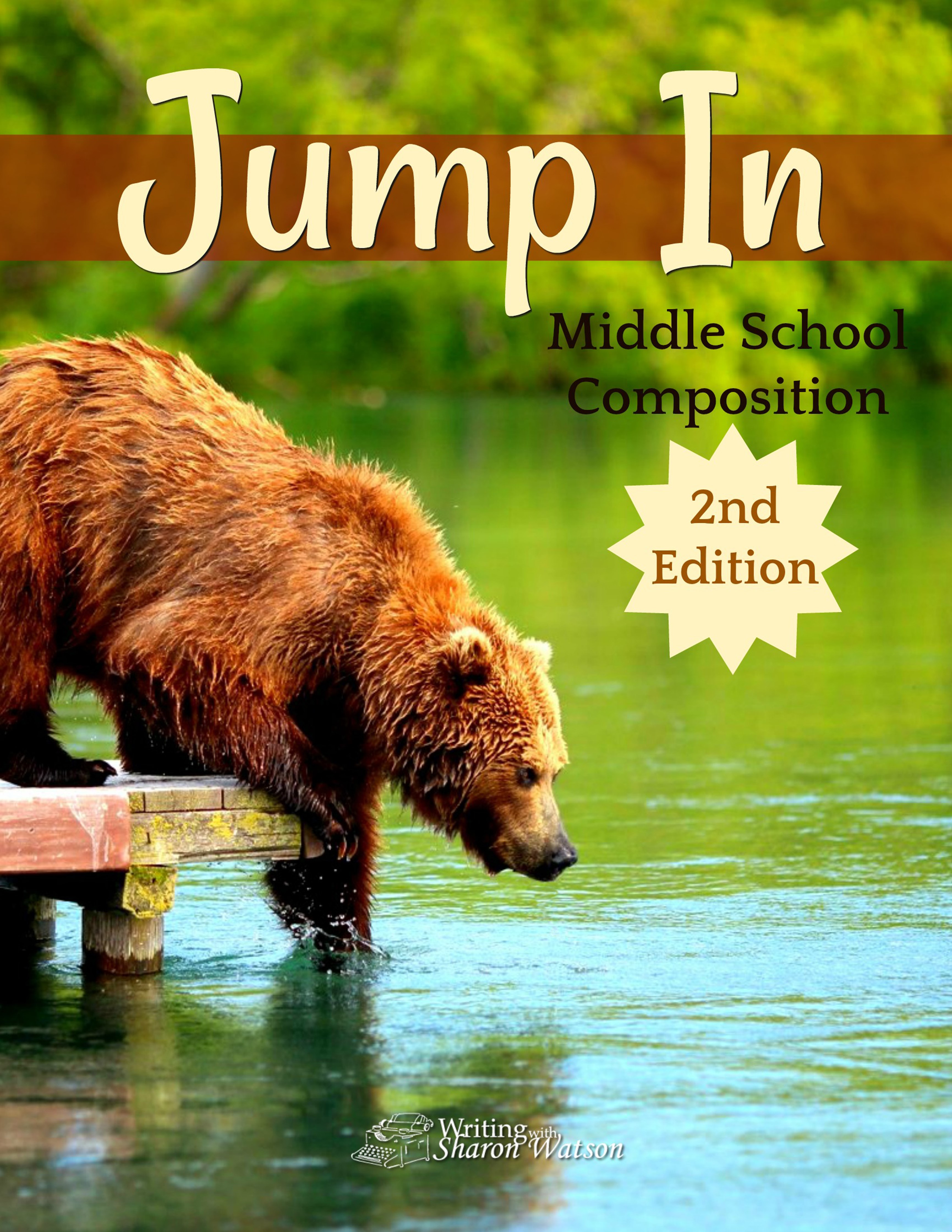Description | Exposition | Narration | Opinion | Persuasion | All
 Give your middle school students something intriguing to write about, whether they are reluctant, eager, or somewhere inbetween.
Give your middle school students something intriguing to write about, whether they are reluctant, eager, or somewhere inbetween.
Free printables for how to create a paragraph, free tutorials on proofreading or in-text citations, current events, asking what they would read to a dog {and other important opinions}, story writing, and much more—you’ll find it all here.
Looking for engaging prompts for your teens? You’ll find those here. >>
Interested in writing prompts for the whole family? Could you use an assortment of prompts bundled together for certain topics or for varying grade levels? Free tutorials and printables included. Find them all here. >>
Thanks for visiting the Middle School Prompts page. If you have a prompt you would like to submit, please contact Sharon Watson.
Prompts about the Grand Canyon
Burros, tall tales, and fears: You can find them all in the Grand Canyon.
In 1893, the Grand Canyon was made a Forest Reserve and then later a National Monument. It became a national park in 1919, just three years after the National Park Service was formed.
Which prompt about this amazing formation will your students enjoy? (more…)
Explore Green on St. Patrick’s Day
We celebrate St. Patrick’s Day on March 17, the day the patron saint of Ireland died.
Many like to wear green on St. Patrick’s Day, but where did the tradition of wearing green come from?
Some say that leprechauns cannot see the color green; therefore, you are invisible to them and cannot be pinched.
Others say it is because green is worn in Ireland by Catholics and orange by Protestants. Or could it be that Ireland is called the Emerald Isle? Or that green is one of the three colors in the Irish flag?
Whatever the reason, we’re going to have some fun with the color green.
Write an Introduction: The Benefits of Owning a Pet
What are the benefits of owning a pet?
I’m sure you could list a few benefits off the top of your head. Good. Keep those in mind as we learn about an essay’s introduction.
When you write an introduction, you’ll want to include a few key items:
1. An intriguing first sentence to capture your reader’s attention. It’s called a hook.
2. A clear idea of what the article or essay is about (its topic).
3. A sentence that is the main idea (thesis statement) that will guide the rest of the article.
Here’s an example of an introductory paragraph about the TV remote. Although it seems serious, this student is actually poking fun at the idea that the TV remote has affected society: (more…)
Tenacity
“Let me tell you the secret that has led me to my goal. My strength lies solely in my tenacity.”
This quote is from Louis Pasteur, a famous scientist who lived in the 1800s and proved that it was not “bad air” that caused some diseases but actually microorganisms that we categorize as germs today. He also developed a vaccine for rabies, and his name is given to a method of killing germs in milk: pasteurization.
So, his secret is his tenacity, but what is it? (more…)
Exiled
What does Jesus’ disciple John have in common with Napoleon Bonaparte? I suppose the image below gives it away, but, yes, they were both exiled—banished from the homes and countries they loved.
John was exiled to the Isle of Patmos in AD 95 during Roman persecution of Christians. While banished to the island, John wrote the book of Revelation. Vistas of the Mediterranean Sea may be beautiful from there, but the island itself is only 30 square miles and very rocky and sterile.
Napoleon Bonaparte, the former emperor of France after the French Revolution, was actually exiled twice. The first time, (more…)
New Species: Have You Heard of Sparklemuffin?
Every year, paleontologists (those who study fossils or life in prehistoric times) find evidence of a species we didn’t know about before, like a new species of terror bird (Llallawavis scagliai) in Argentina. Its skeleton shows it was ten feet tall!
And, often, other types of scientists discover new animals or species still living that no one knew about. For instance, the kitefin shark was recently discovered in the deep sea off the coast of New Zealand. It not only luminesces but also its dorsal fin “emits light,” according to smithsonianmag.com. And now we know about a spider that looks like it has a peacock tail. It has been dubbed Sparklemuffin (Maratus jactatus), according to livescience.com.
In addition, a bird thought extinct for over 150 years surprisingly has turned up in a rainforest in Borneo. Ornithologists captured the black-browed babbler as it flitted through the trees. Then they photographed it for identification and sent it on its way, according to smithsonianmag.com.
Miracles
Mr. George McWhirter Fotheringay doesn’t believe in miracles.
At least, that’s what H. G. Wells tells us in his short story “The Man Who Could Work Miracles.” First published in 1898, it tells of a man who didn’t believe in miracles but ended up doing some anyway.
One day, Mr. Fotheringay argues his case in a local tavern. He defines a miracle as “something contrariwise to the course of nature done by the power of Will, something that couldn’t happen without being specially willed.”
While arguing against miracles, he ends up doing one. (more…)

















